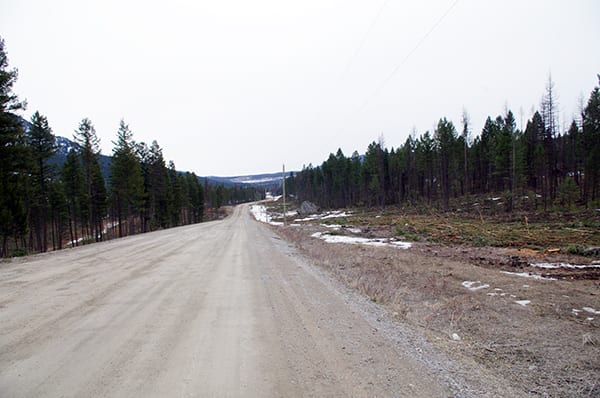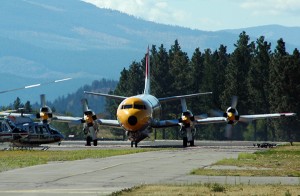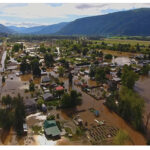Home »

City seeks funds for wildfire mitigation work
City of Cranbrook council Nov. 26 gave the go-ahead to city staff to seek grant funding in order to conduct two wildfire mitigation projects on city lands
Scott Driver, acting director of Cranbrook Fire & Emergency Services, outlined in a report to council that he needed approval for an application to the Community Resilience Investment Program “to fully fund wildfire mitigation work on city-owned lands, including the Canadian Rockies International Airport (CRIA) and re-treatment of the Gold Creek Maintenance Unit.”
The Community Resiliency Investment (CRI) Program is a new provincial program intended to reduce the risk and impact of wildfire to communities in B.C. through community funding, supports and priority fuel management activities on provincial Crown land, Driver explained, noting the application deadline is December 7.
“Our research indicates that the proposed project, although outside the scope and scale of the funding guidelines ($100,000), will be considered for additional funding streams (Forest Enhancement Society) in addition to CRI and it is in our best interest to ask for this comprehensive, multi-year project as a single item so that the true value of the work can be identified up front making its acceptance more likely. If the city is not successful in obtaining the grant, the project will not proceed,” Driver said.
The two suggested treatments, the Canadian Rockies International Airport (106 ha) and the Gold Creek Maintenance Unit (146 ha) both take place on city-owned land and have been previously identified in the Cranbrook Forest Estate Plan (2015), Driver reported to council.
 “The CRIA has been identified as critical provincial infrastructure in the event of a major natural or manmade disturbance. The threat identified by the city is a wildfire impacting airport facilities as well as flight operations (as happened with the Williams Lake Airport in 2017). Suppression resources operating out of CRIA (pictured right) were highly successful during the critical initial attack phase of operations in retarding the forward spread of several recent significant wildfires in the area. If CRIA were forced to shut down air operations during the fire season the nearest source of air attack resources would be Castlegar, which would involve a significant cycle time for these critical resources,” he said. “This unit will then be incorporated into a large (1,300 ha) prescribed burn unit with ?aq’am.”
“The CRIA has been identified as critical provincial infrastructure in the event of a major natural or manmade disturbance. The threat identified by the city is a wildfire impacting airport facilities as well as flight operations (as happened with the Williams Lake Airport in 2017). Suppression resources operating out of CRIA (pictured right) were highly successful during the critical initial attack phase of operations in retarding the forward spread of several recent significant wildfires in the area. If CRIA were forced to shut down air operations during the fire season the nearest source of air attack resources would be Castlegar, which would involve a significant cycle time for these critical resources,” he said. “This unit will then be incorporated into a large (1,300 ha) prescribed burn unit with ?aq’am.”
The Gold Creek Maintenance Unit lies along the Gold Creek Forest Service Road (pictured above), which is a busy travel corridor for homeowners, recreationalists, and the timber industry, Driver pointed out.
The proposed treatment unit is part of a larger landscape fuel-break including Joseph Creek, the Lower Baker Mountain Burn Unit, Joseph Creek Reservoir and the KV powerline right-of-way.
“Fire behaviour conditions will increasingly favour high-intensity passive and small-scale active crown fire and medium range spotting. This is due to the increasing density and height of regenerating conifers on this site. By applying a slash/lob/scatter treatment followed by a prescribed burn we can add a decade to the period of effectiveness for this fuel treatment,” Driver said.
The cost estimate for the work is $530,440 (CRIA $149,672; Gold Creek $380,768) and the city is seeking 100% grant funding, Driver’s report concluded.
After council approved the grant application, Mayor Lee Pratt told council he will be meeting with provincial government officials in the New Year to learn more about a wildfire mitigation project in Quesnel that could be mirrored by Cranbrook.
e-KNOW







